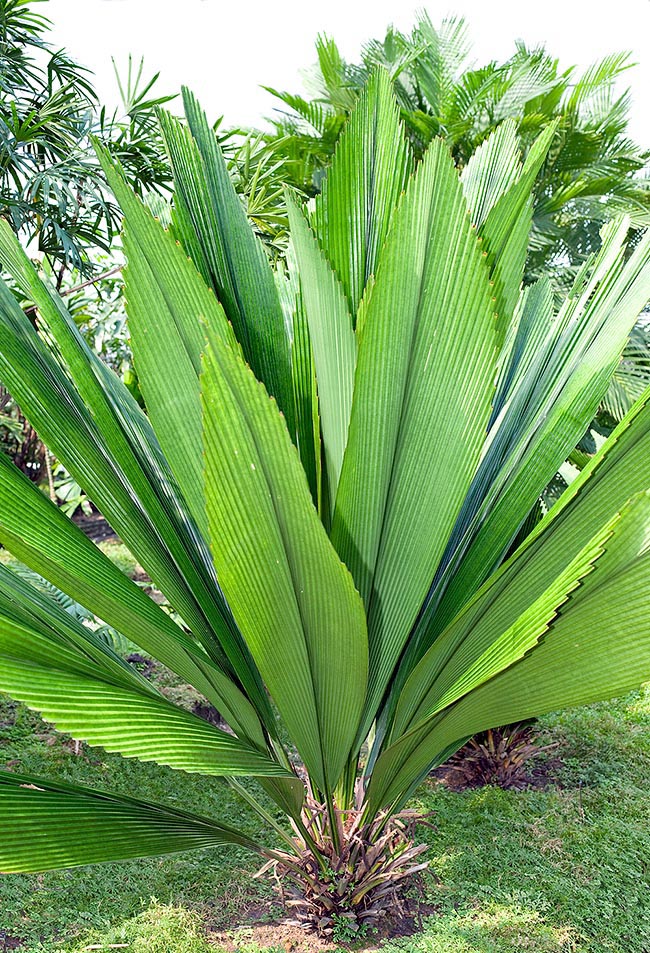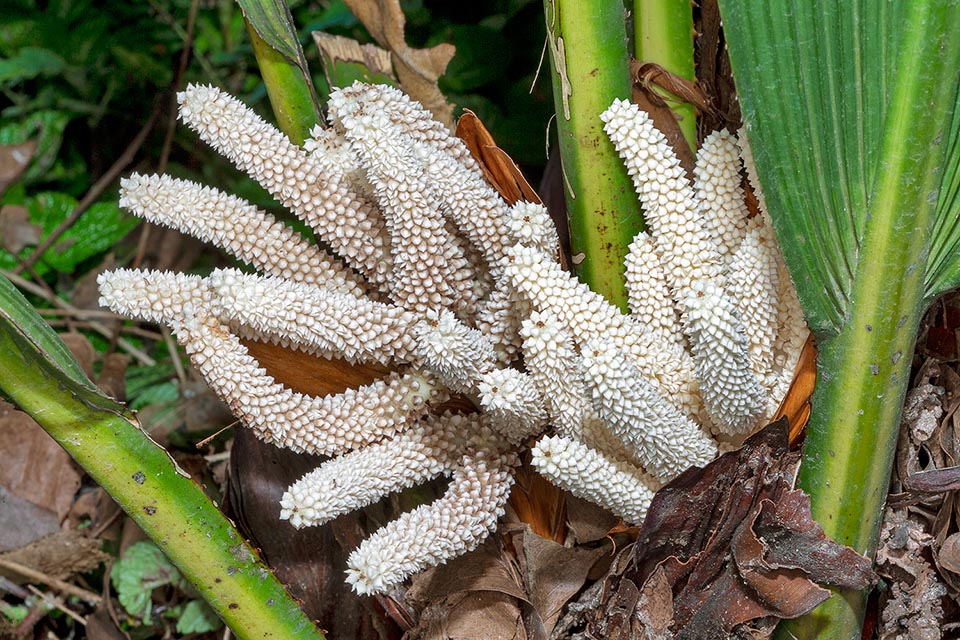Family : Arecaceae

Text © Pietro Puccio

English translation by Mario Beltramini

The Johannesteijsmannia lanceolata is very close to extinction © Giuseppe Mazza
The plant is native to the pluvial forest of the peninsular Malaysia, where it grows on the hilly slopes at low altitudes.
The genus is honoured to the Dutch botanist Johannes Elias Teijsmann (1808-1882); the Latin name of the species, “lanceolata” = shaped like a lance head, refers to the shape of the leaf.
Common names: slender joey, umbrella leaf palm (English).
Johannesteijsmannia lanceolata J.Dransf. (1972) is a monoecius plant with subterranean single stem, creeping, with leaves which seem to be emerging from the ground.
The leaves are entire, lanceolate, and long up to about 3 m and 30 cm broad, with close nervations and indented apex, of glossy intense green colour on the upper side, covered by tiny brown scales below; the petioles, rather short, have two yellowish bands on the sides, and are armed with small and cutting thorns on the margins.
The inflorescences emerge from between the leaves and are short, almost hidden by the base of the petioles, ramified, and carrying hermaphrodite flowers of cream colour, very much odorous.
The fruits are globular, of 2-3 cm of diameter, covered by brown pyramidal tubercles.
It reproduces by seed, which, if fresh, it quickly germinates.
It is the rarest species among the four belonging to the genus, and is at risk of extinction; the International Union for Conservation of Nature (IUCN), has placed it in the list of the plants at extremely high risk of extinction in the next future (“endangered”).
Rare plant even in cultivation, it is present only in few botanical gardens and in some private collections; it is suitable for cultivation only in humid tropical climate zones, in a shady location, on preferably acidic and draining soils; it does not bear dry periods and temperatures lower than +10 °C.

The inflorescences, almost hidden, grow at the base of the petioles. They are short and ramified, with very odorous hermaphrodite flowers © Giuseppe Mazza
Due to its characteristics, it might be an excellent subject as pot plant, for decorating greenhouses, winter gardens and spacious interiors, even if little luminous, utilizing substrata rich of organic substance, with addition of coarse sand or agri-perlite, by around the 30%, for improving the drainage, kept constantly humid and with temperatures never lower than +16 °C.
→ For general notions about ARECACEAE please click here.
